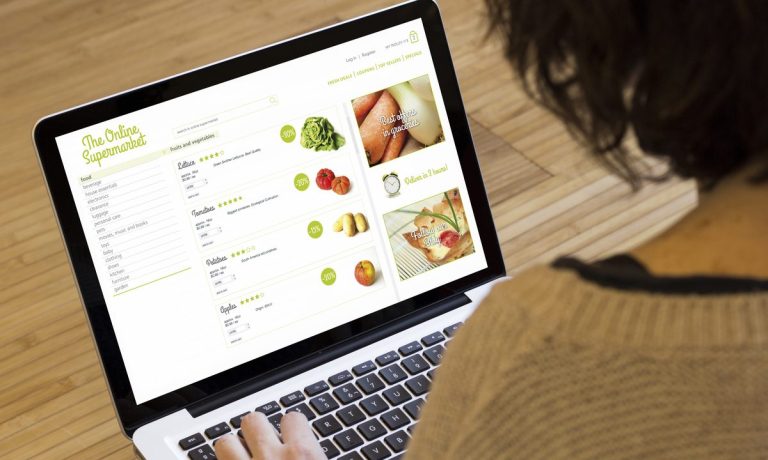
As grocers look to escape their reliance on third parties such as Instacart by building their own eCommerce businesses, there are many factors they must juggle.
They must assemble orders, they must manage or outsource their drivers and routes, they must track their inventory and keep the eShelves stocked, they must keep in communication with their customers and more. Inefficiencies at any point can both send costs soaring and have ramifications for consumers’ experiences that could send them running to competitors.
In an interview with PYMNTS, Guy Bloch, CEO of delivery and fulfillment cloud platform Bringg, noted that, when the pieces of the puzzle are not connected, things can fall through the cracks, and customers are not quick to forgive.
“You [may not] have enough inventory to properly serve your customers, which has an impact on their customer experience, [or] maybe … you promised the customer delivery within two hours, and it arrived after three hours,” Bloch said. “We see the impact of not being digitized and connected — we see the impact in their customer loyalty … [and] in general customer experience and satisfaction.”
Grocery customers certainly do stay loyal to merchants that provide a compelling online experience, revealed findings from PYMNTS’ study, “Decoding Consumer Affinity: The Customer Loyalty To Merchants Survey 2022,” created in collaboration with Toshiba Global Commerce Solutions.
Get the report: The Customer Loyalty To Merchants Survey 2022
The report, which featured the results of a census-balanced survey of more than 2,000 U.S. consumers in late fall 2021, found that digital customers tend to be more loyal to their grocers than their in-store counterparts. Specifically, 34% of online grocery customers shop with just one merchant, and 36% shop at three or more. On the other hand, only 16% of grocery’s brick-and-mortar customers shop from just one merchant, while almost half shop from three or more.
Calling the Shots
Bloch argued that, as consumers’ online grocery options increase by the month, the merchants that offer consumers the ability to take the experience into their own hands, choosing from the widest range of fulfillment options, can build the strongest relationships with their customers.
“The change is that we’re becoming customer centric, and we’re moving the control into the hands of consumers, and that’s how they pick and choose where they want to buy,” he said.
The Decoding Consumer Affinity report found that one in five grocery customers reported that access to delivery options would improve their loyalty to their grocery retailer, and 23% said the same of online purchasing ability. Notably, however, only 8% of consumers reported that payment or fulfillment features are the most influential factor when selecting a merchant from which to purchase grocery products.
Time Is Money
By keeping every step of the supply chain digitized with systems that can communicate with one another, grocers can eliminate inefficiencies, which both saves on the costs of products, equipment and labor and increases their capacity to meet demand.
Bloch contended that this flow of digital information is necessary to maximizing the factor most important to online grocery shoppers: time-saving capability. With artificial intelligence (AI) using data to offer re-purchasing predictions, he argued, shoppers can quickly fill their carts and check out.
PYMNTS data showed that these digital shoppers’ No. 1 priority is convenience, but speed is still toward the top of the list.
Research from the study “What Consumers Expect From Their Grocery Shopping Experience,” created in collaboration with ACI Worldwide, found that 76% of those who shift their grocery shopping to digital channels do so because they reported it is easier and more convenient than in-store shopping. Meanwhile, more than half do so to save time, with 57% saying that they shop digitally because it is faster to purchase online.
Read more: Digital Features Can Help Grocers Win Over 43% of Shoppers
“Groceries will grow to be just commodities more and more over time,” Bloch said. “It’s another thing that we need to do, and [we can] get it to be convenient, cost-effective, fast and reliable.”
Taking on Amazon
Bloch asserted that there is very little room for grocers to keep part of their businesses out of the digital sphere, given the scale of the logistics capabilities of eCommerce giants like Amazon and leading marketplaces such as Instacart. Those that do not use every digital tool at their disposal to compete will fall by the wayside, he said.
“We’re going to see that shift of brands stepping up, scaling up and putting up a better game in order to fight the Goliaths of the market, which are really the marketplaces or certain brands like Walmart that started that journey a while ago and made it a high priority for their company,” he said. “And now they can compete with Amazon, but the rest of the market is just behind.